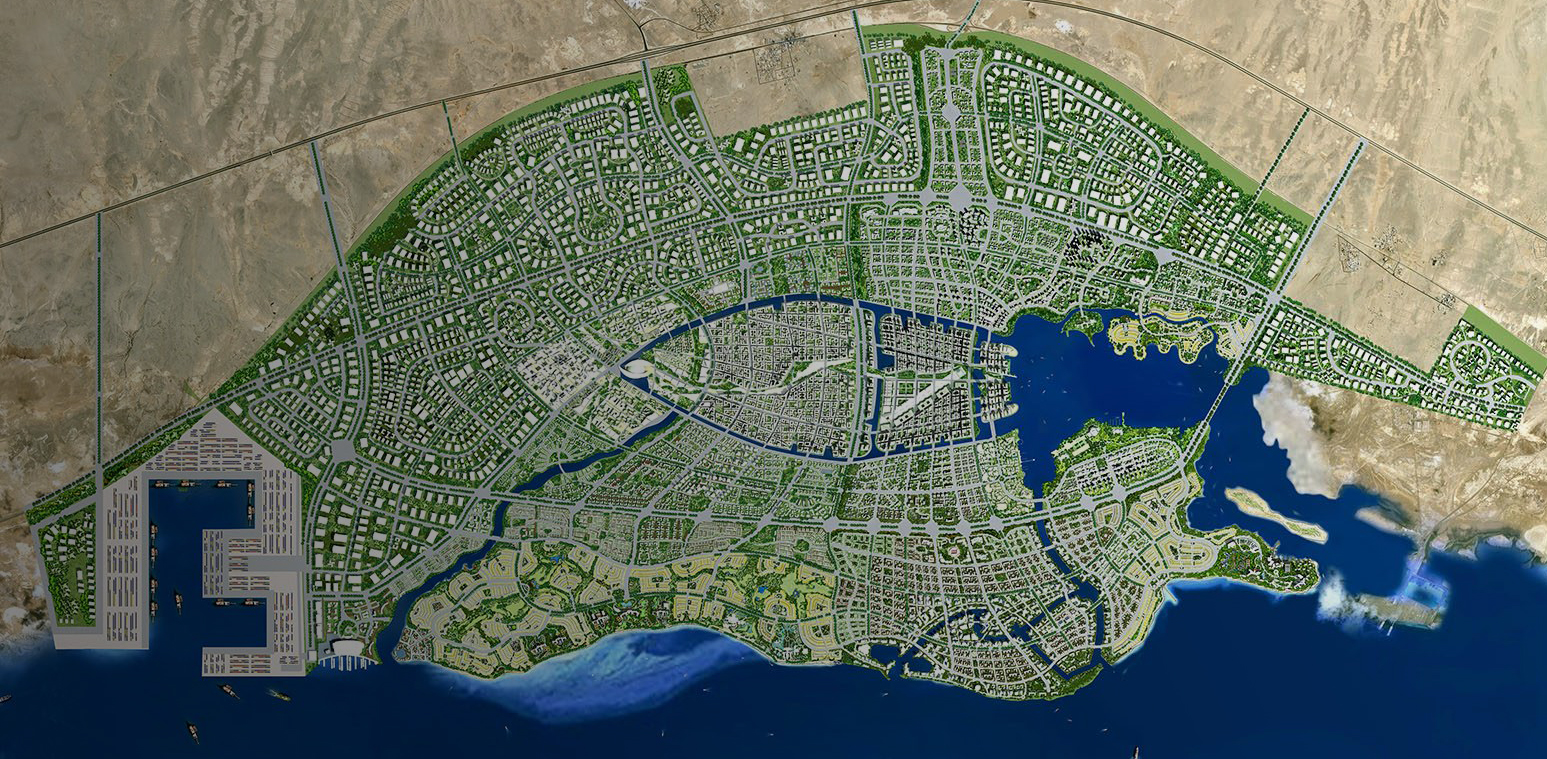Architects: Showcase your work and find inspiration for your next project through Architizer, or enter the One Drawing Challenge for a chance to win $2,500!
Every country has a story to tell. In Portugal, architecture and culture come together in a range of monumental and iconic buildings. Although many Portuguese towns and cities are characterized by well-preserved, historic architecture, contemporary architects are using modern ideas to advance traditional design methods and techniques. When traveling through its many cities and towns, visitors can capture a glimpse of how context, design culture and innovation create new concepts and spaces.
Exploring Portugal’s architecture through the lens of modernism, the following projects showcase a small sample of the incredible building projects across the country. Incorporating diverse programs, scales and environmental conditions, they challenge notions of pragmatism in private and public spaces alike. Designed with an intentional relationship to site, these projects rethink ornamentation and free-flowing forms through detailing and structural innovation. Made with expansive volumes and surfaces, they are made to orient and expand spatial boundaries while centering on people and culture through a modernist lens.
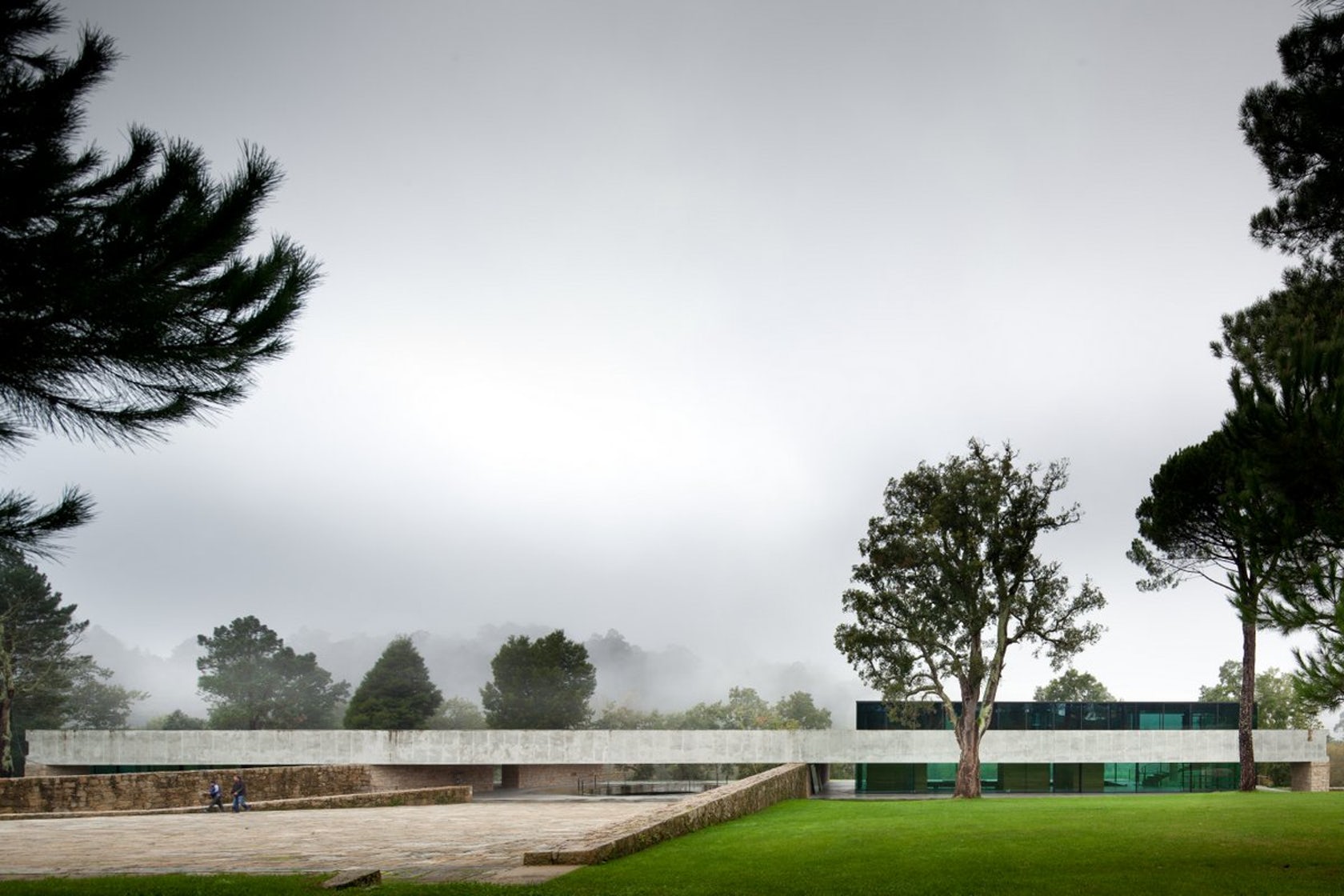
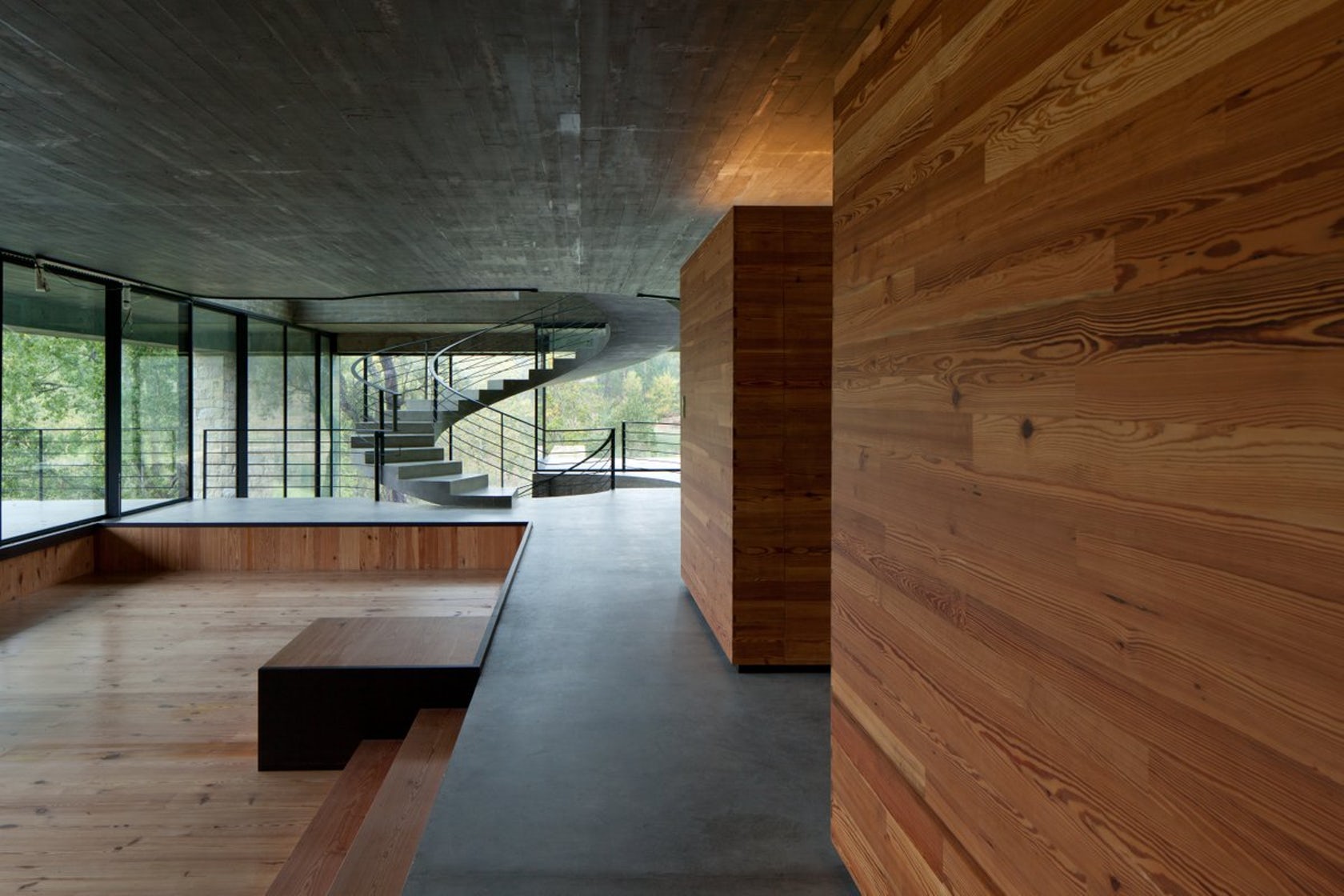 Monção Houses by JPLoureiro, Arquitecto, Lda, Monção, Portugal
Monção Houses by JPLoureiro, Arquitecto, Lda, Monção, Portugal
These two houses by the bank of the River Minho were created for a father and son. They are joined together by a large, pre-stressed concrete flagstone. The strong horizontal gesture begins to frame different landscape conditions and shape both the circulation and views on site. At the core of the project is an ellipsis and circle made to leave space for a sculpture or new growth. As a conciliation between modern technologies of building and more traditional construction in this area, the project balances the horizontality of the pre-stressed concrete with blocks of stone that create walls in the landscape. The shape and the tectonics of the building establish a connection with the place, transforming it into a part of the landscape.
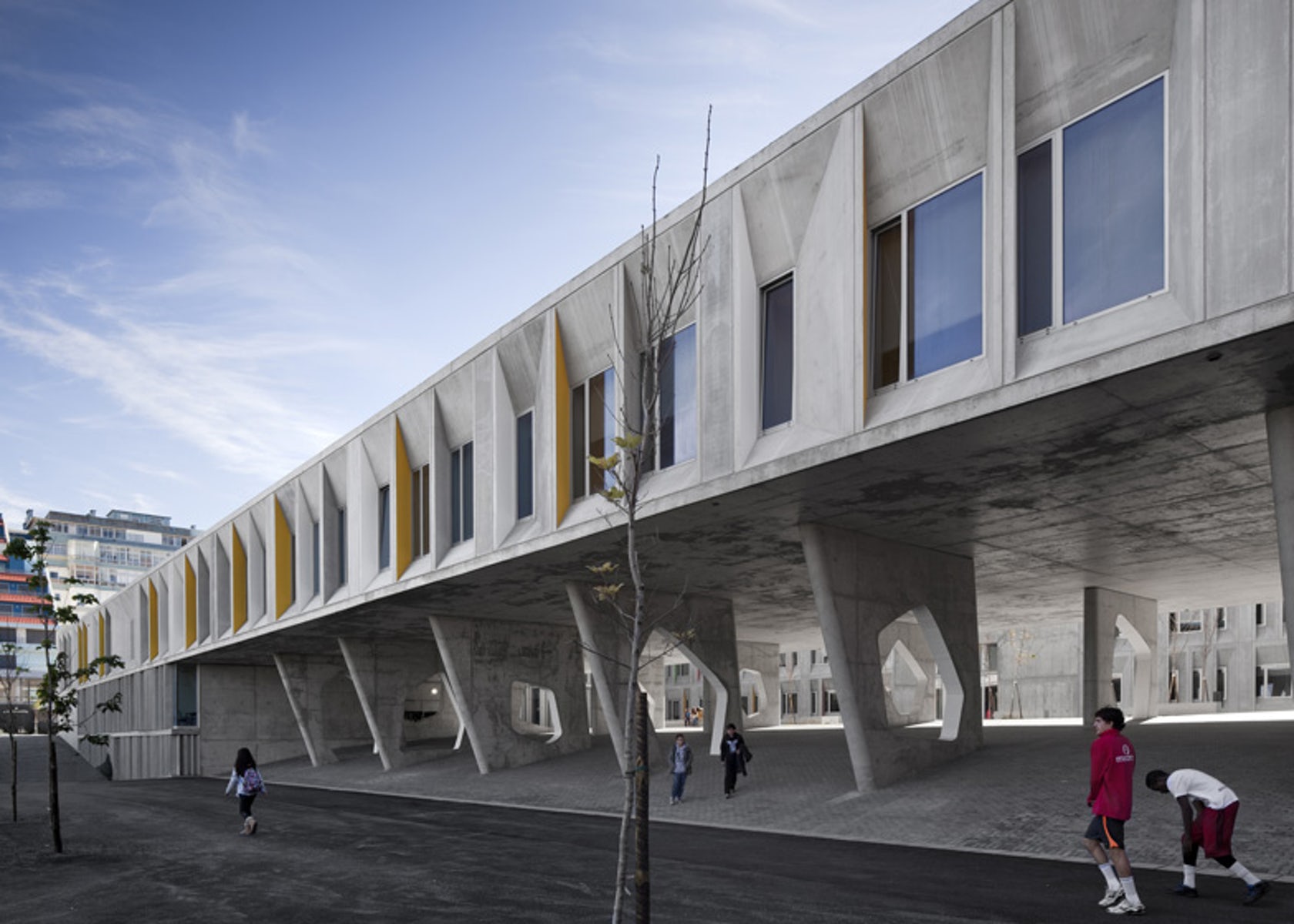
 Braamcamp Freire Secondary School by CVDB arquitectos, Pontinha, Portugal
Braamcamp Freire Secondary School by CVDB arquitectos, Pontinha, Portugal
A secondary school located in Pontinha’s urban fabric, Braamcamp Freire is a rehabilitation project of an existing school built in 1986. The new design was created to reorganize spaces, articulate different functional areas and open the school up to the community. A combination of in situ and prefabricated concrete elements make up the façade and respond to solar orientation. The Braamcamp Freire Secondary School is located at the edge of the historical centre of Pontinha, Lisbon. The rehabilitation project of the building was part of the Portuguese “Modernisation of Secondary Schools Programme”, which has been implemented by the Parque Escolar E.P.E. since 2007. The Programme’s objective is to reorganize schools spaces to articulate their different functional areas and to open these schools to their local communities.

 Party Hall by José Marini Bragança, Portugal
Party Hall by José Marini Bragança, Portugal
José Marini Bragança’s Party Hall was designed to provide a strong relationship with its natural surroundings. To minimize its visual impact, the building is raised up from the ground. The glass, its predominant material, blurs the boundaries between interior and exterior spaces. Both the ceiling and the inside floor paving features white coloring that intends to visually frame the landscape. The support bathroom stands as a unique element to destabilize the whole proposal’s serenity, with the red of its inside fittings as a counterpoint to the whole building white color.
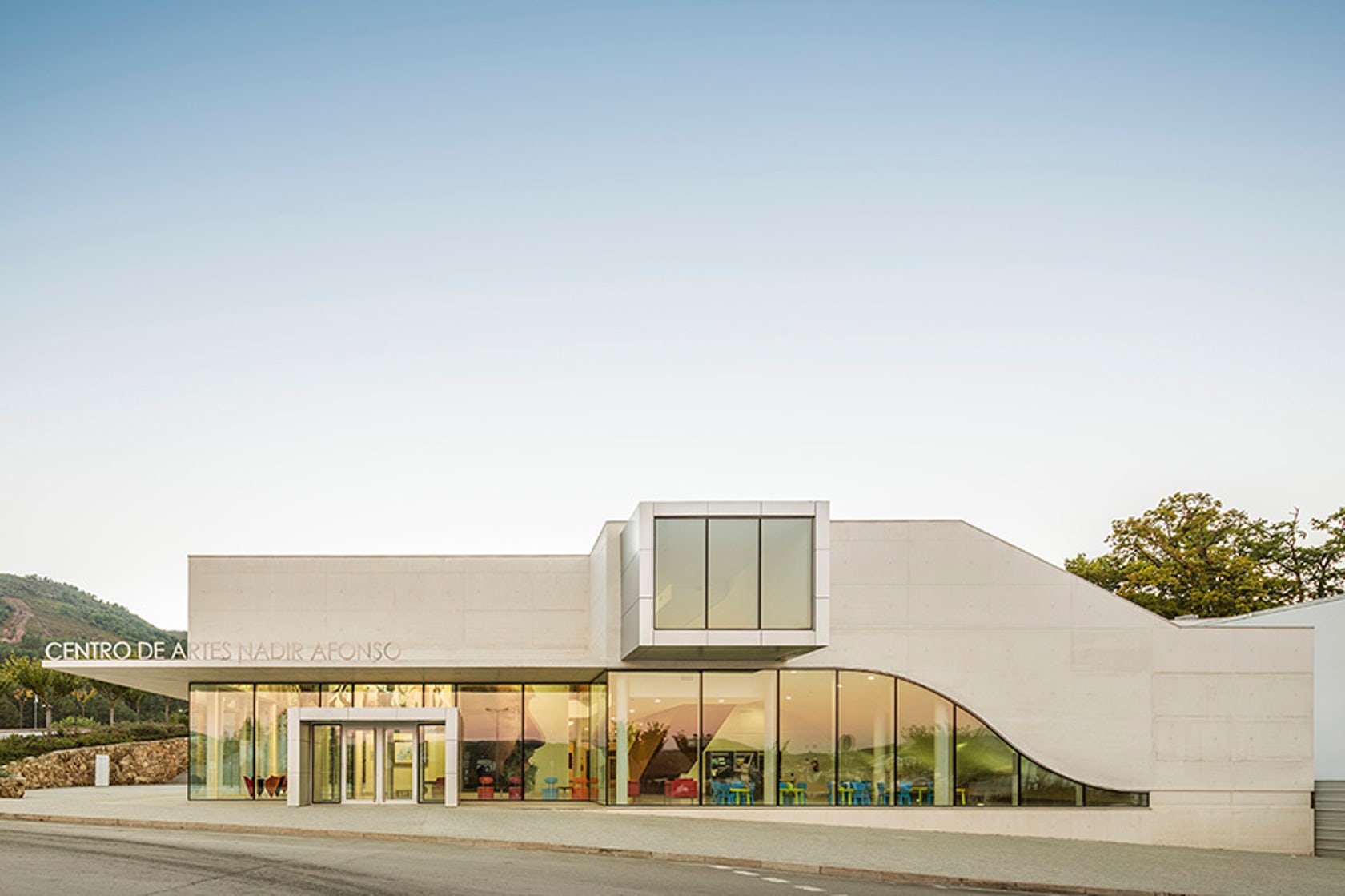
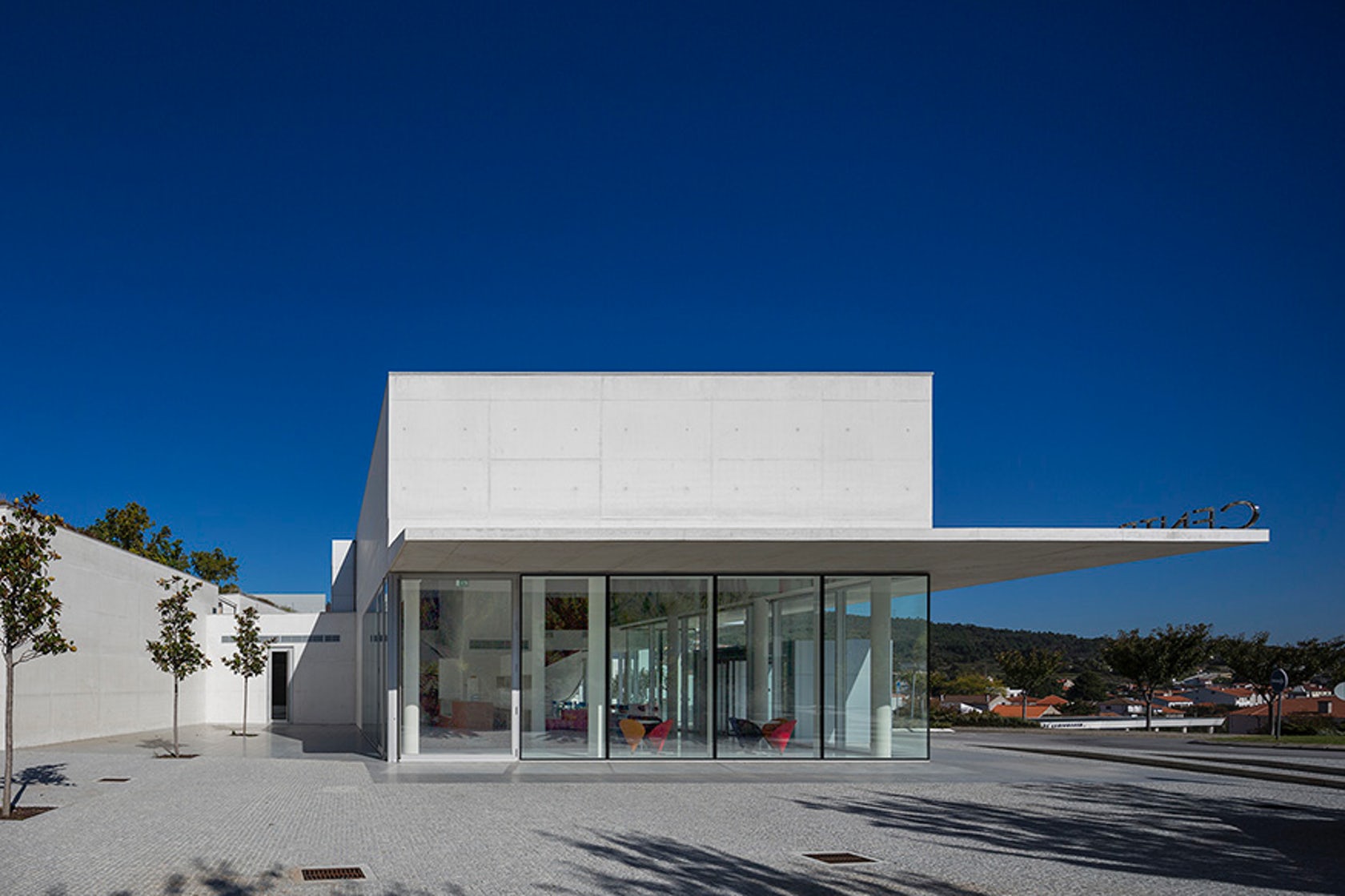 Centro de Artes Nadir Afonso by Louise Braverman Architect, Boticas, Portugal
Centro de Artes Nadir Afonso by Louise Braverman Architect, Boticas, Portugal
The Centro de Artes Nadir Afonso literally and figuratively breaks new ground in its northern Portuguese town of Boticas. The new 20,000-square-foot sustainable museum displays 80 works created by the renowned living Portuguese artist, Nadir Afonso, who early in his career practiced architecture with Le Corbusier and Oscar Niemeyer. Intertwined with the urban development of Boticas, the museum is sited to create a cultural extension of this medieval hill town. Merging landscape and architecture, the new sustainable building is divided into two distinct but connected parts. The urbane cultural structure across the street from the newly built municipal building speaks to the future of Boticas, while a green-roofed park covered, below-grade, exhibition hall facing the adjacent rolling hills connects to its pastoral legacy.
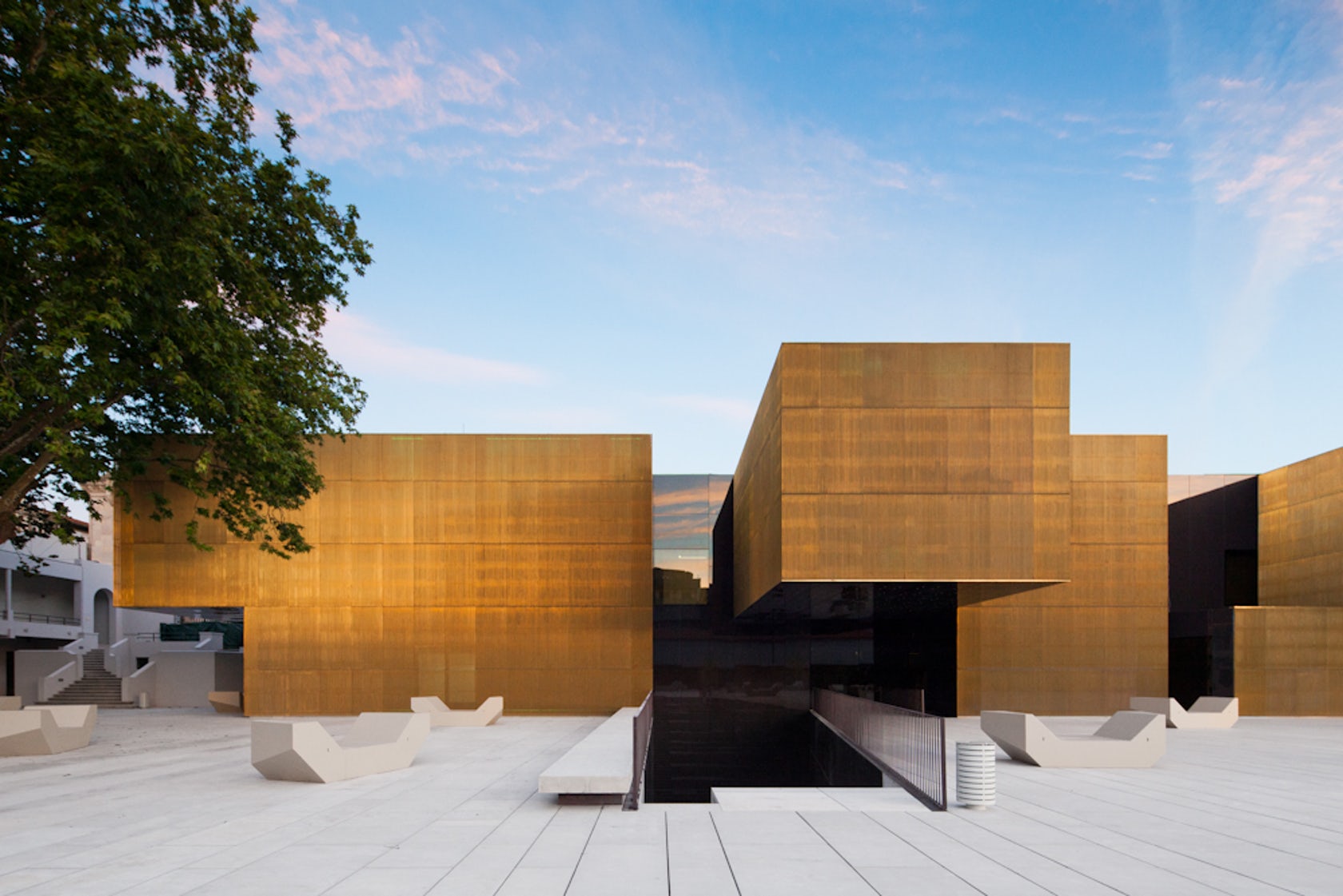
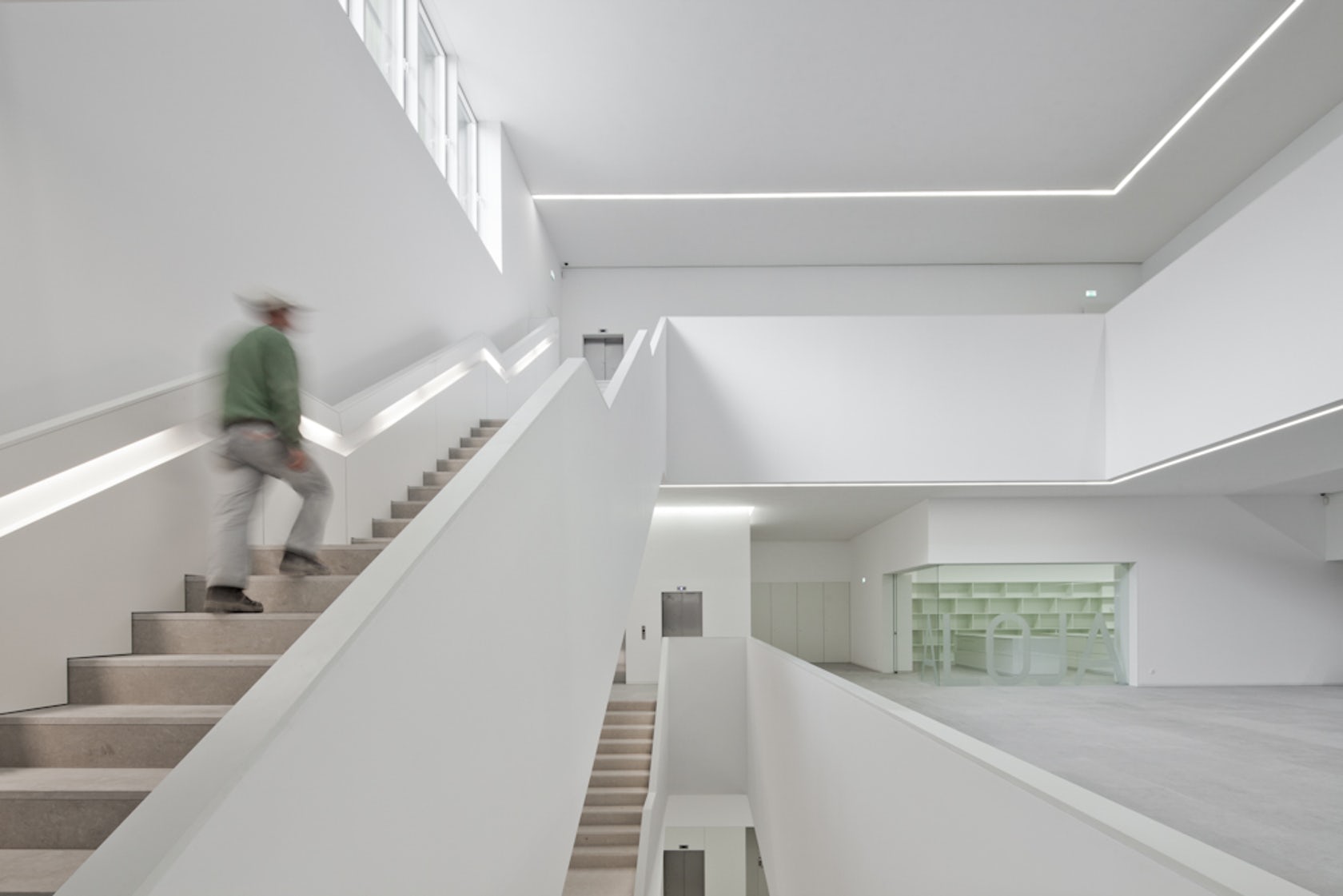 Platform of Arts and Creativity by Pitagoras Arquitectos, Guimarães, Portugal
Platform of Arts and Creativity by Pitagoras Arquitectos, Guimarães, Portugal
The buildings that make up the Municipal Market and the space defined by them, commonly referred to as “the square”, are very close to the Toural Square and the city’s historic center. With this project, the transformation of the marketplace was made into a multifunctional space dedicated to artistic, economic, cultural and social activities within the scope of European Capital of Culture 2012. The project allowed for the physical and functional reintegration into the urban fabric and the regeneration of the interior space of the block. The whole structure was designed to complement the existing spaces in the city, as well as those which are under development within the European Capital of Culture. When interpreting the program, the team aimed to allow for the possibility of each components to function independently and simultaneously, creating access to each of the various services and support areas, as well as to the outdoor square and garden.

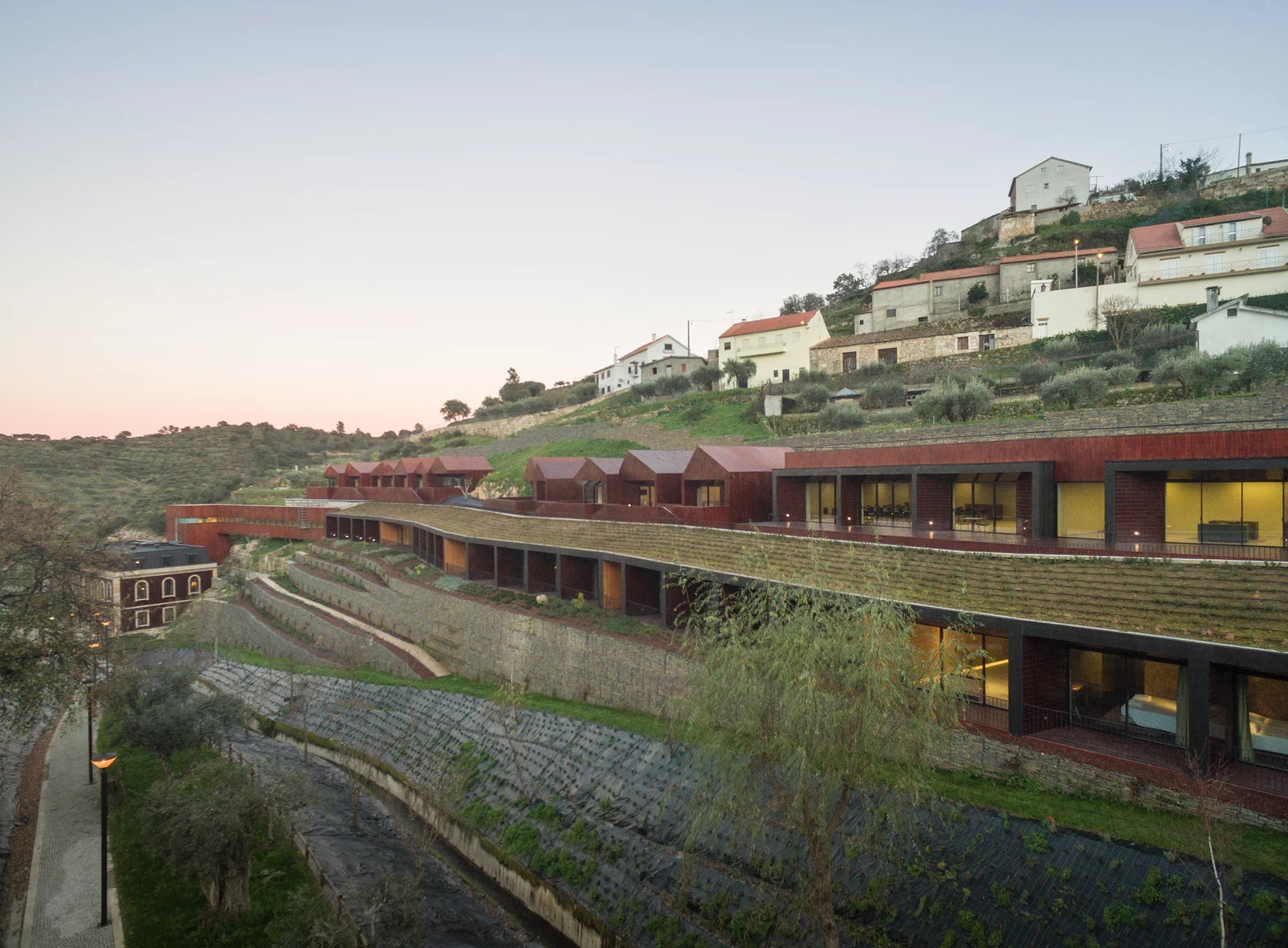 Longroiva Hotel Rural by Rebelo de Andrade, Mêda, Guarda, Portugal
Longroiva Hotel Rural by Rebelo de Andrade, Mêda, Guarda, Portugal
Longroiva’s Hotel & Thermal Spa is located in the county of Mêda, northeast Portugal, next to Longroiva’s Thermal Spa. The old building of the Thermal Spa, which is dates back to the late XIX century, was rehabilitated to house 17 rooms on the upper floors, and social areas on the ground floor. This building is connected to the new volumes through a walking path, which connects the upper floor of the old building to the new modules of rooms. These volumes flow into the swimming pool area, which bridges the new hotel unit and the existing thermal spa. Above the level of the rooms, there are service areas and ten bungalows, divided into two groups, separated by a stone mass. This strong visual relationship with the landscape is also present in the careful choice of materials and colors, invoking the vegetation of the area and the local building materials.
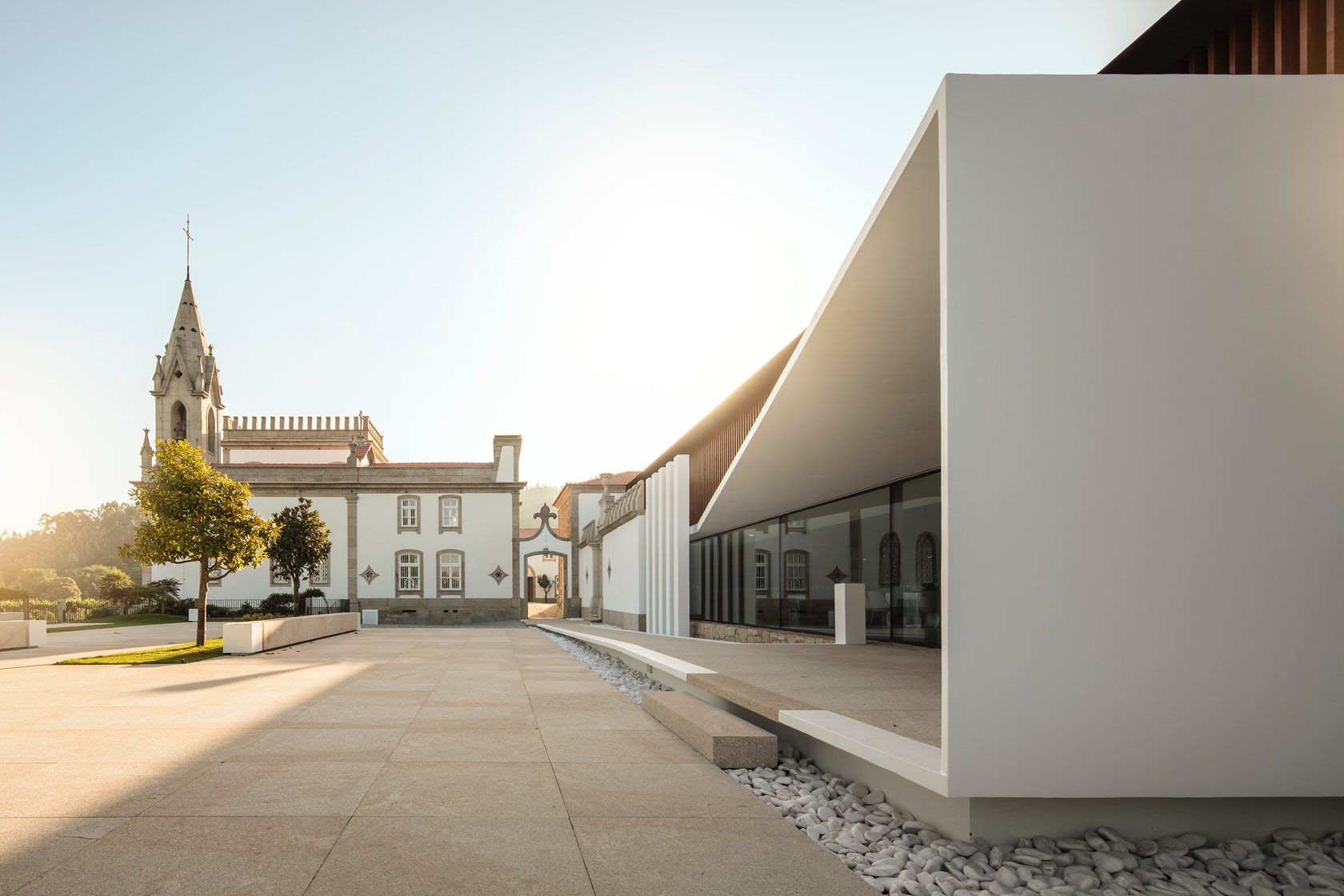
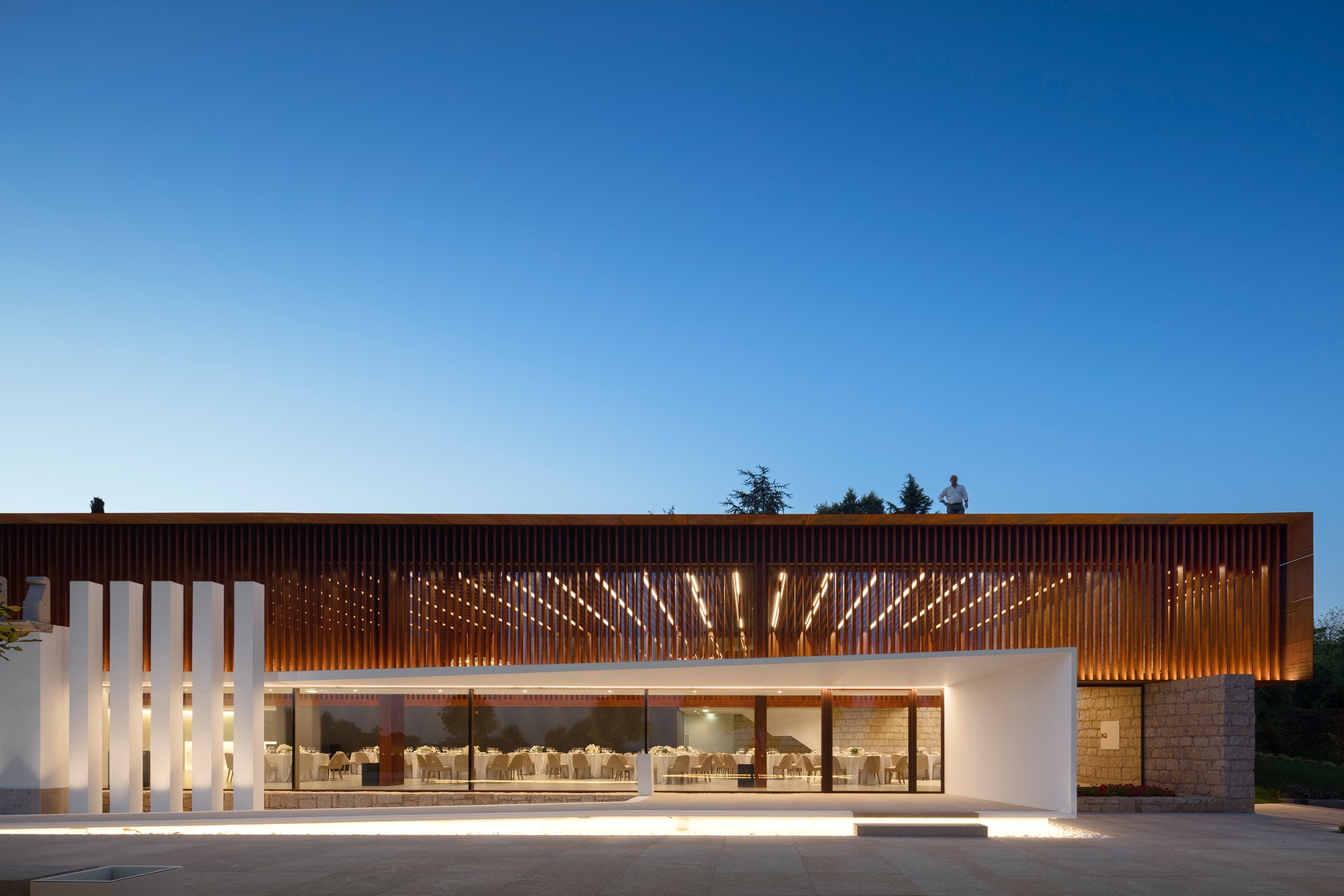 Palácio Igreja Velha by VISIOARQ – ARQUITECTOS, Vermoim, Portugal
Palácio Igreja Velha by VISIOARQ – ARQUITECTOS, Vermoim, Portugal
Built in 1881, in Vermoim – Vila Nova de Famalicão, the Igreja Velha Palace was for many decades the mansion of an important farm. With the introduction of many additions that deprived the complex of its features, this project came across many challenges regarding its constructive and functional aspects. The expansion, with a new volume built to host events, is made to be complementary to the use of the palace. The preservation in the local cultural landscape was possible due to a demanding recovery criteria when integrating the new volume. The old/new counterpoint asserted itself through the mixture between local and more modern materials and original constucion processes, maintaining a harmony with the landscape. The COR-TEN steel that covers much of the building, the granite, the wood and the concrete embody the concept inspired in the old local granaries.
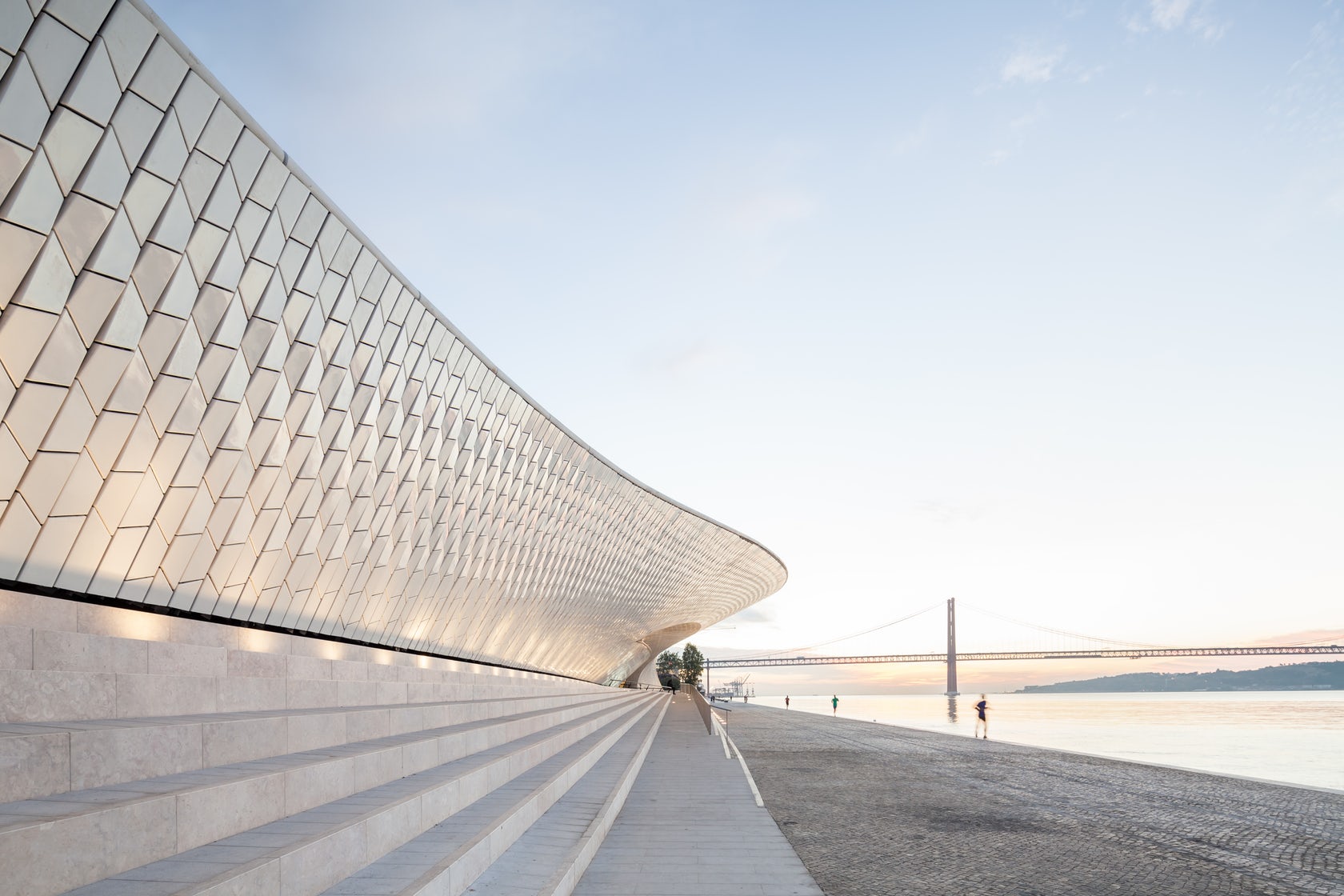
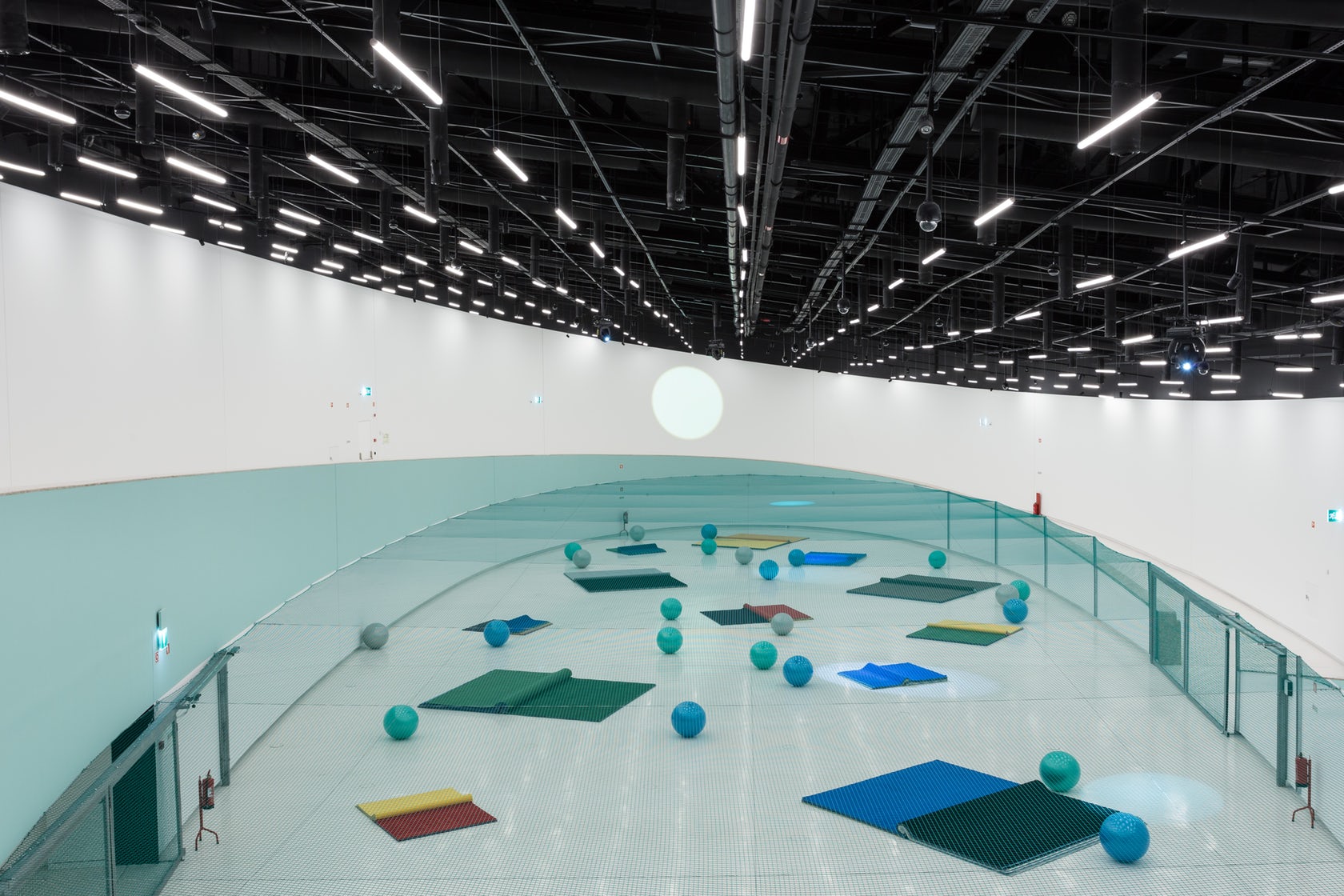 MAAT by AL_A, Lisbon, Portugal
MAAT by AL_A, Lisbon, Portugal
The Museum of Art, Architecture and Technology (MAAT) was designed to explore contemporary culture through visual arts, new media, architecture, technology and science. MAAT was made to be the focal point of the EDP Foundation Campus site on the River Tagus in the district of Belém, at the heart of an urban revitalisation along one of Lisbon’s most historic waterfronts. Housed within two buildings on a 3.8 hectare site, MAAT comprises the new kunsthalle structure and the recently renovated Central Tejo power station. Blending structure into landscape, the kunsthalle is designed to allow visitors to walk over, under as well as through the building. The kunsthalle contains four distinct gallery spaces that sit beneath an undulating roof, which has been conceived to create significant new public spaces on the roof and along the waterfront.
Find all your architectural inspiration through Architizer: Click here to sign up now. Are you a manufacturer looking to connect with architects? Click here.
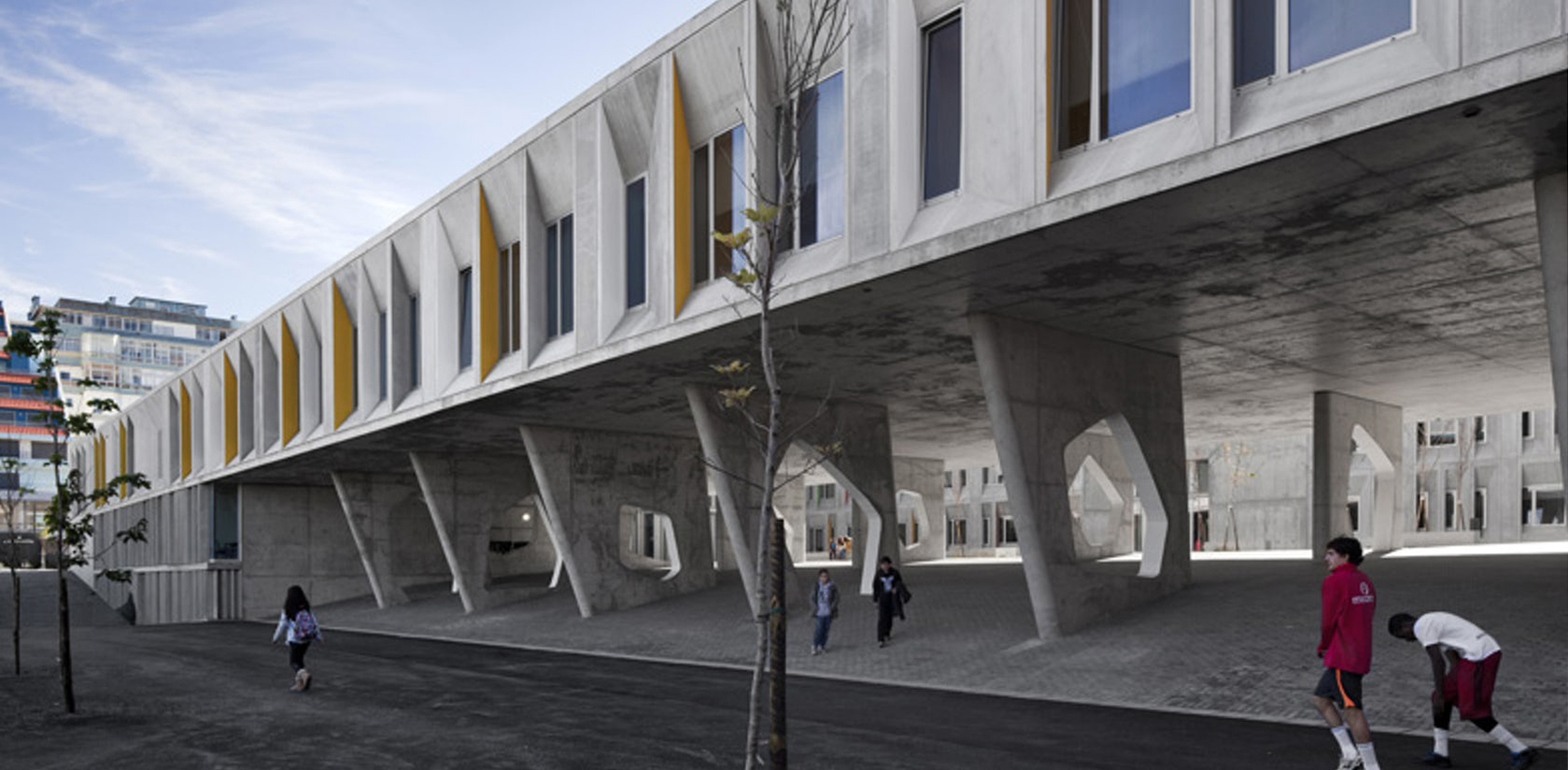




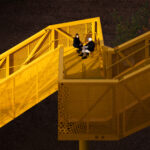
 Braamcamp Freire Secondary School
Braamcamp Freire Secondary School  Centro de Artes Nadir Afonso
Centro de Artes Nadir Afonso  Longroiva Hotel Rural
Longroiva Hotel Rural  MAAT
MAAT  Party Hall
Party Hall  Platform of Arts and Creativity
Platform of Arts and Creativity 
